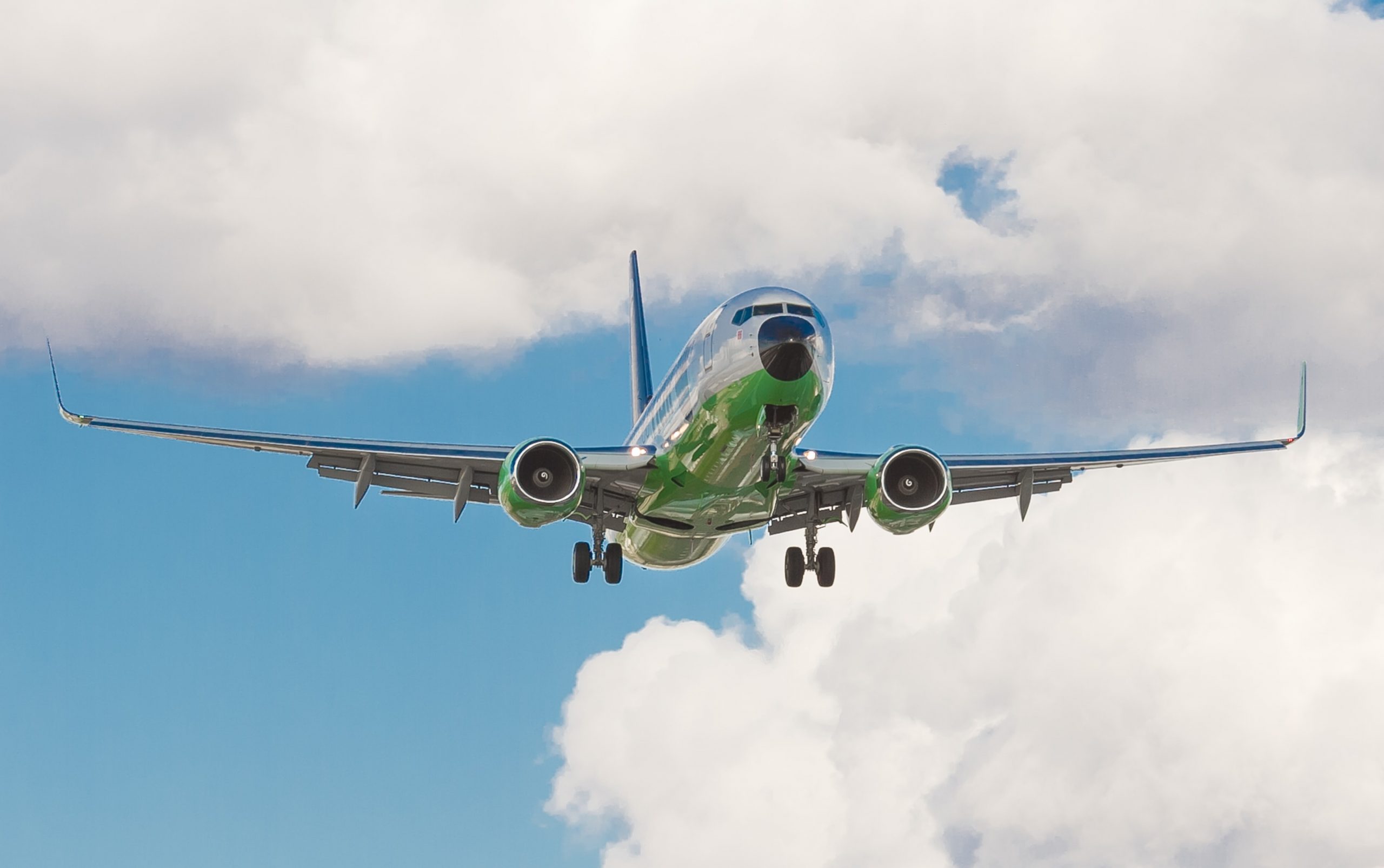




06 Oct 2025
Why Are Lease Rates Fluctuating in Today’s Market?
Lease rates, once a relatively predictable benchmark in aviation finance, have turned volatile. Narrowbodies that commanded one lease rate last year are now priced at a premium, while regional aircraft face sharper corrections. Supply chain constraints, rising interest rates, and surging post-pandemic demand are colliding to create one of the most unpredictable leasing environments in recent memory.
For lessors and financiers, the core issue isn’t whether rates are moving it’s how to evaluate assets and price risk when fundamentals are shifting quarter by quarter.
What Exactly Are Lease Rates?
Lease rates are the monthly payments airlines make to operate an aircraft, expressed as a lease rate factor typically 0.6% to 1.2% of current market value (CMV) per month. For instance, a $50m narrowbody might generate $300k–$600k monthly, depending on age, liquidity, and market sentiment.
In the present cycle, lease rate factors are anything but stable. They are being recalibrated against higher funding costs, residual value concerns, and concentrated airline demand for newer, fuel-efficient assets.
What’s Driving the Fluctuations?
Lease rates are moving because multiple structural and macroeconomic forces are converging at the same time.
- Supply–Demand Imbalance
OEM backlogs and production delays mean fewer new aircraft are entering service. Airlines competing for limited leased capacity are driving lease rates upward, particularly for in-demand narrowbodies.
- Rising Interest Rates
Most lessors finance acquisitions with debt. As borrowing costs rise, so do required lease returns. These higher financing costs are being passed directly to airlines.
- Airline Recovery
Passenger demand has rebounded faster than expected, especially in Asia and Europe. Carriers seeking to restore networks quickly are pushing demand for leases well ahead of OEM delivery schedules.
- OEM Delivery Delays
Supply chain bottlenecks, certification challenges, and engine shortages continue to slow new deliveries. Leasing remains the only short-term capacity solution.
- Preference for Fuel-Efficient Assets
Airlines are prioritising new-generation aircraft such as the A321neo and 787 for fuel burn savings and compliance with environmental regulation. Lease rate premiums for these models are significant compared to older types.
- Geopolitical and Policy Risks
Sanctions, regional conflicts, and insurance challenges have increased operating risk in certain jurisdictions. The Russian sanctions episode highlighted the vulnerability of lessor portfolios to political risk.
- Currency Fluctuations
With leases typically denominated in USD, exchange rate swings are creating additional volatility in both airline costs and lessor risk assessment, especially in emerging markets.
In short, lease rate volatility is not being driven by a single factor; it is the combined effect of constrained supply, higher funding costs, and concentrated demand for specific asset types.
Are All Aircraft Affected the Same Way? (Regional vs. Larger Jets)
The answer is no. Lease rate volatility plays out differently across aircraft categories, with regional jets bearing the brunt of uncertainty while larger narrowbodies and widebodies retain stronger fundamentals.
Regional Jets: Why They Struggle More
Regional aircraft such as Embraer E-Jets or ageing 50-seaters like the CRJ200 remain essential to network connectivity, but they carry higher financing risk:
- Weak Secondary Market: Placement options are limited, making remarketing costly and time-consuming for lessors.
- Pilot Shortages: Regional carriers are disproportionately affected, as pilots migrate quickly to mainline operators offering better pay.
- Scope Clauses in the U.S.: Union restrictions cap the size and number of regional jets in service, artificially limiting growth.
- Fleet Ageing: Many 50-seaters are nearing the end of their economic lives, which reduces financing appetite and depresses values.
Result: Lessors and banks apply stricter terms and higher lease rate factors to regional assets, reflecting their liquidity risk.
Larger Aircraft: Why They’re More Attractive
By contrast, narrowbodies and widebodies are consistently more attractive to financiers:
- Robust Secondary Market: Assets such as the A320neo and 737 MAX can be placed globally, ensuring liquidity.
- Stable Demand: High-density and medium-haul routes depend on these aircraft, keeping utilisation high.
- Fuel Efficiency: Next-generation narrowbodies and twin-aisles deliver significant cost savings, sustaining premium lease rates.
- Financing Confidence: Lenders and lessors see these aircraft as “core assets,” supporting longer lease terms and more competitive pricing.
Result: Larger aircraft absorb volatility better, making them safer bets for investors and lessors.
Quick takeaway: Lease rate fluctuations are universal, but regional aircraft experience sharper swings due to limited market depth, while larger jets remain more resilient thanks to global demand and liquidity.
How Do Interest Rates and Inflation Shake Things Up?
They directly raise the cost of capital for lessors and erode operating margins for airlines, which in turn drives lease rates higher.
Why Higher Interest Rates Matter
Aircraft leasing is a highly leveraged business. Lessors typically finance acquisitions through debt, and when benchmark interest rates climb, borrowing costs increase sharply. To maintain margins, these costs are passed down to lessees via higher lease rentals or tighter deal structures.
For airlines, this creates a double impact: not only do financing costs rise, but lease rate factors also increase, stretching already thin operating margins.
Inflation’s Role
Inflation compounds the pressure by inflating the cost of spares, labour, MRO events, and fuel. Lessors price this risk into their deals, knowing that elevated operating costs can affect lessee credit quality. Airlines, particularly smaller or regional carriers, feel this squeeze more acutely since they lack the financial resilience of global majors.
Why Airlines Feel It Most
For carriers, higher lease rates can mean difficult trade-offs, either absorb the extra cost and risk margin compression, or attempt to pass it through to passengers via ticket pricing, which isn’t always viable in competitive markets. Regionals again face the steepest challenge, as their yield environment doesn’t allow for easy recovery of rising financing costs.
In short: rising interest rates and persistent inflation translate into higher lease rentals, shorter tenures, and stricter terms. Until capital markets ease, leasing will remain more expensive for operators across the board.
How Does Airline Recovery Drive Lease Rates Up?
Airline recovery is driving lease rates higher because demand for capacity has returned far faster than the supply of aircraft. This imbalance gives lessors pricing power and leaves airlines with limited options.
Demand Bounces Back Faster Than Supply
Passenger traffic has surged across key markets, particularly in Asia and Europe. However, OEM production delays and existing backlogs mean new deliveries cannot match this pace. Airlines needing immediate capacity turn to the leasing market, intensifying competition for available aircraft.
More Airlines Chasing Fewer Aircraft
This supply-demand mismatch has created a landlord’s market. Lessors with narrowbodies and new-generation assets in their portfolios are securing premium lease rates, while airlines have little choice but to pay.
Newer Aircraft in Highest Demand
Fuel-efficient types such as the A320neo family and 737 MAX are in particularly high demand. Their operating cost advantages and sustainability profile make them a priority for airlines, which only accelerates upward pressure on lease factors for these assets.
Airlines Stuck Between Choices
Operators now face two options:
- Pay higher lease rentals to secure new-technology aircraft immediately, or
- Extend the life of older, less efficient fleets, absorbing higher fuel and maintenance costs.
Neither path is ideal, but capacity needs force decisions.
In short: with recovery outpacing supply, lease rates climb, rewarding lessors while squeezing airlines’ margins.
Why Do Aircraft Delivery Delays Push Lease Rates Higher?
Aircraft delivery delays push lease rates higher because airlines that can’t get new jets from OEMs are forced into the leasing market, creating a surge in demand for available aircraft.
The Backlog Problem
Airbus and Boeing are sitting on record order backlogs, with popular models like the A321neo sold out well into the next decade. Even if an airline signs a purchase agreement today, delivery could be years away.
Production Delays Make It Worse
Supply chain disruptions, labour shortages, and engine reliability issues continue to slow output. Each missed delivery extends the gap between demand and supply, making leasing the only near-term option for capacity growth.
Leasing Becomes the Only Shortcut
With OEM slots unavailable, airlines must secure in-service aircraft through operating leases. This inflates competition in the leasing market and drives lease rate factors upward, particularly for narrowbodies that offer fuel efficiency and network flexibility.
Who Feels the Pinch?
- Airlines: Forced to pay higher rentals or retain ageing fleets longer.
- Lessors: Benefit from stronger yields and faster placement of assets.
- Passengers: Eventually see costs filter down into ticket prices.
In short: OEM delivery delays amplify supply shortages, and with leasing as the only immediate solution, rates inevitably rise.
Why Is the Push for Fuel-Efficient and Sustainable Aircraft Driving Lease Rates?
Lease rates are rising for new-technology aircraft because airlines and lessors view fuel efficiency and sustainability as critical to long-term economics, regulatory compliance, and asset value retention.
From Fuel Guzzlers to Fuel Savers
Next-generation aircraft like the Airbus A350, Boeing 787, and A320neo family deliver 20–25% lower fuel burn than older types. For airlines, this translates into immediate operating cost savings, while for lessors it ensures higher placement demand and stronger residual values.
Sustainable Aviation Fuel (SAF) as a Catalyst
With regulators and investors pressing for emissions reduction, airlines are adopting SAF wherever possible. Aircraft certified for higher SAF blends are in greater demand, further boosting lease rates for newer models. Limited SAF availability makes efficiency gains even more valuable in the interim.
Beyond Traditional Engines: Hydrogen and Electric Concepts
Looking further ahead, hydrogen-powered and electric aircraft projects highlight how sustainability is reshaping fleet strategies. While not yet commercially viable at scale, they reinforce investor and airline preference for cleaner technology and cast doubt on the long-term financing prospects of older, less efficient fleets.
Why It Matters to Financiers
For lessors and lenders, sustainability isn’t just an environmental issue but a financial one. Assets with stronger green credentials face lower regulatory risk, maintain liquidity longer, and justify premium lease rate factors. Conversely, fuel-inefficient aircraft risk early obsolescence and value erosion.
In short: sustainability pressures are funnelling demand toward fuel-efficient, new-technology aircraft, tightening supply and driving lease rates higher.
How Is Cargo Shaping Aircraft Lease Rates?
Cargo is reshaping lease rates by creating steady demand for freighter aircraft and passenger-to-freighter (P2F) conversions, which boosts asset values and diversifies lessors’ revenue streams.
Strong E-Commerce Growth
The surge in online shopping has made e-commerce giants and integrators (Amazon, DHL, FedEx) key drivers of freighter demand. Mid-sized freighters like the Boeing 767 and A321P2F are especially attractive, sustaining higher lease rentals.
Conversion Market Pressure
With OEM freighter slots sold out years in advance, P2F conversions are booming. These conversions are costly but extend aircraft life cycles, keeping older assets relevant and influencing overall leasing values.
Resilience During Downturns
Unlike passenger traffic, cargo demand has proven more resilient through economic cycles. Lessors holding freighters in their portfolio enjoy steadier cash flows, which makes these aircraft comparatively safer assets in volatile markets.
Strategic Implications
For financiers and lessors, cargo has shifted from being a supplementary market to a core growth driver. Portfolios balanced with freighters alongside passenger aircraft are increasingly viewed as lower risk.
In short: cargo demand is driving lease rate strength in freighters and conversions, providing lessors with diversification and more predictable returns.
Industry Trends and the Road Ahead – Will Lease Rates Stabilize?
Will Aircraft Lease Rates Stabilize Anytime Soon?
The answer is no — at least not in the near term. Persistent supply bottlenecks, surging demand, and macroeconomic pressures mean volatility will remain a defining feature of the leasing market through this decade.
Leasing as a Long-Term Strategy
With nearly half of the global fleet already under lease and the proportion still rising, airlines continue to prioritise operating flexibility over ownership. This structural shift ensures leasing remains central to fleet planning.
Demand for Fuel-Efficient Jets
Airlines are aggressively pursuing new-technology assets such as the A320neo, A321XLR, and 737 MAX. With OEM backlogs extending into the next decade, lease rates for these models will remain elevated.
Regional and Freighter Growth
Regional aircraft face persistent financing headwinds, but freighters are thriving on the back of e-commerce. This divergence is fragmenting the market, with lease rate strength concentrated in specific asset classes.
Macro Factors Still Bite
High interest rates, inflation, and geopolitics from trade restrictions to conflicts continue to raise capital costs and disrupt fleet strategies. These pressures compound leasing volatility and leave lessors cautious.
Longer-Term Outlook
Stability will only return once OEMs ease backlogs and supply aligns more closely with demand. Until then, airlines and lessors must adapt to an environment where pricing swings are the norm rather than the exception.
Lease rates won’t stabilise in the immediate future; instead, volatility will define the market, rewarding agile lessors and airlines that can manage risk effectively.
So, Why Are Lease Rates Fluctuating — and What Comes Next?
Lease rates are fluctuating because demand for capacity is outpacing supply, capital is more expensive, and sustainability and cargo dynamics are reshaping asset preferences. For lessors and financiers, this environment creates both risk and opportunity.
On one hand, limited OEM output, high interest rates, and inflation are driving volatility. On the other, the resilience of cargo, the rise of fuel-efficient aircraft, and long-term growth in air travel underpin strong fundamentals for those who can manage risk strategically.
For regional aircraft, financing challenges remain acute due to weaker secondary markets and scope-clause constraints. In contrast, larger narrowbodies and freighters are benefiting from strong liquidity and premium lease rates, reinforcing their status as core investment assets.
Looking ahead, lease rates are unlikely to stabilize until OEM production normalises and macroeconomic pressures ease. Until then, agility will separate winners from laggards. Lessors and airlines that adapt portfolios, embrace sustainability, and price risk effectively will emerge strongest.
Volatility is here to stay, but it’s navigable. For aviation finance professionals, the key isn’t avoiding lease rate swings, it's positioning portfolios to capture value from them.
FAQs on Lease Rate Volatility
1. What is the lease rate factor in aviation?
The lease rate factor (LRF) is the monthly rental expressed as a percentage of the aircraft’s current market value. Typical LRFs range from 0.6% to 1.2%, depending on aircraft type, age, and market conditions.
2. Why are lease rates for new-technology aircraft higher?
Because demand for fuel-efficient models like the A320neo or 737 MAX far exceeds supply. These aircraft deliver lower operating costs and sustainability benefits, which lessors can price into higher rentals.
3. Are regional aircraft always harder to finance than larger jets?
Yes — primarily due to weaker secondary markets, limited operator bases, and U.S. scope-clause constraints. Lessors apply stricter terms and higher premiums to offset these risks, unlike the more liquid narrowbody market.
4. How do interest rates affect lease pricing?
Higher interest rates increase the cost of capital for lessors, who then pass these costs on to airlines via higher rentals. Combined with inflation, this makes leasing materially more expensive during tight credit cycles.
5. Will lease rate volatility ease in the near future?
Not immediately. OEM backlogs, high demand, and macroeconomic pressures point to continued fluctuations through the decade. Stability may only return once production normalises and financing costs decline.





